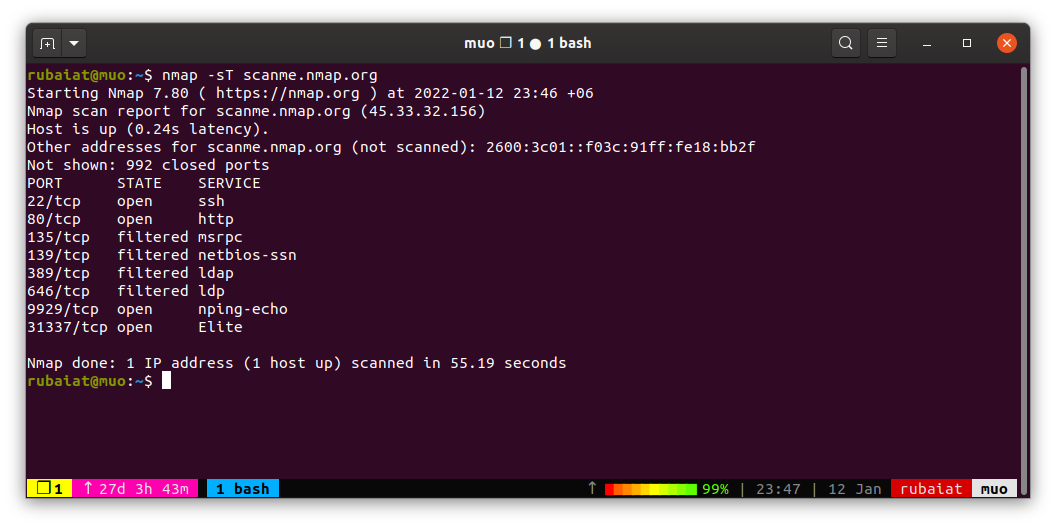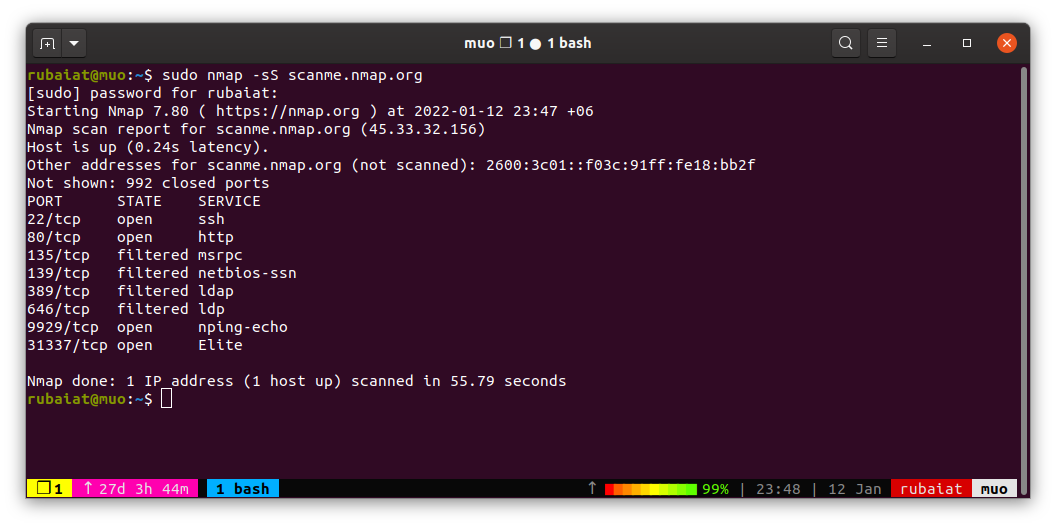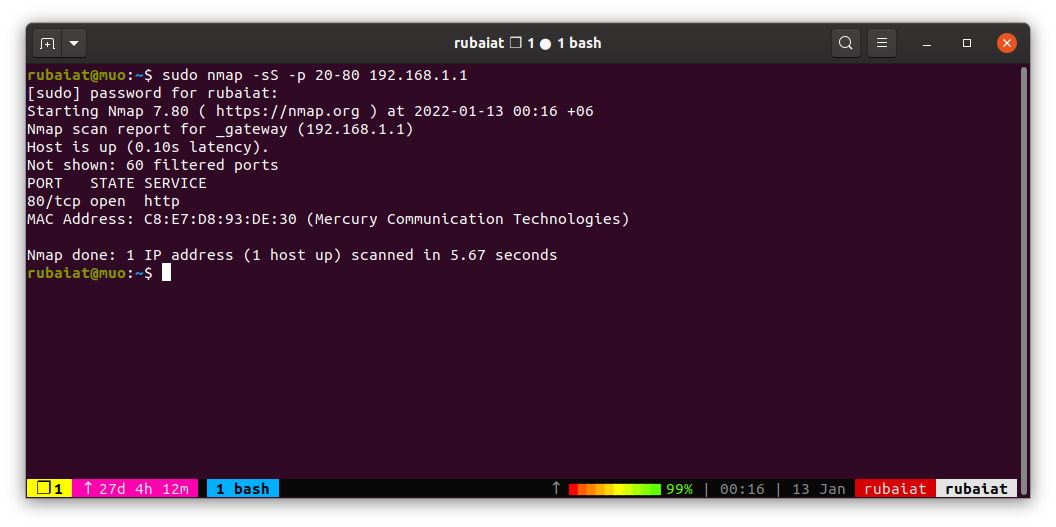Nmap is a robust tool for scanning computer networks, helping you to spot any weakpoints in a system. Its compelling feature set makes it the de-facto tool for monitoring open ports on your network. Some of its other features include host discovery, service detection, and OS fingerprinting.
So how can you use Nmap port scan techniques to find all open ports?
Nmap Commands to Scan All Open Ports
Computer ports are endpoints that facilitate data communication over networks. That's why they are essential to both hackers and security analysts. Nmap makes scanning open ports easier even for starting users.
You can find a list of all open network ports using the below Nmap command.
nmap -sT scanme.nmap.org
The -sT option tells Nmap to perform a full TCP scan. This scan type doesn't require sudo privileges, but it can also be noisy.
Use the -sS option if you don't want to be obtrusive.
sudo nmap -sS scanme.nmap.org
This method is stealthier, but it does require sudo permission on Linux
The above commands scan the network for open TCP ports. However, you can also find open UDP ports using Nmap. Use this Nmap command to scan UDP ports on a network:
sudo nmap -sU scanme.nmap.org
Up until now, we have scanned for all open ports using Nmap. But you may also specify which ports to check using the -p option of Nmap. It makes the scan faster and less intrusive.
sudo nmap -sS -p 20-80 192.168.1.1
This command scans the port numbers 20 to 80 for the home network. You can specify random ports using a comma-separated list.
Monitor Network Ports Using Nmap
Nmap's simple interface and rich feature set make it the go-to tool for scanning open ports. Plus, it provides many extra facilities, including service detection and bug discovery.
Beginners can also choose from readily available Nmap scripts for finding risky services.




